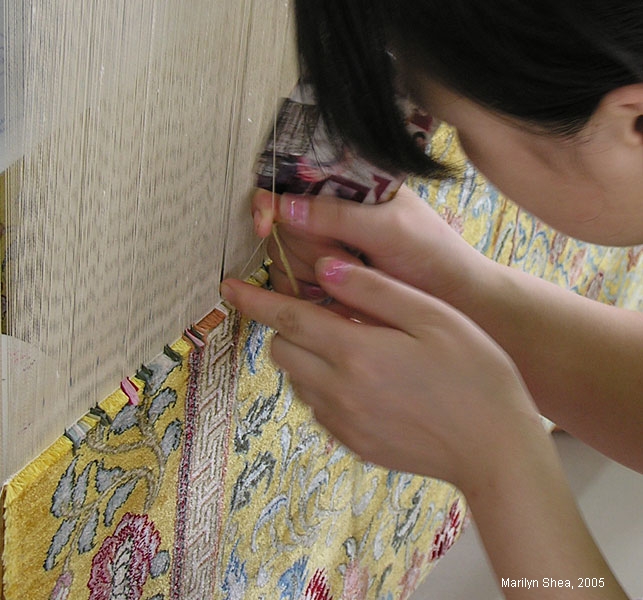 |
| Silk carpets are tied in much the same way as any carpet. Alternating pairs of lines or strings are tied together so that the carpet holds together. The card in her hand is used to separate the pairs of lines tied together in the previous row.
Quality in carpets is measured by the number of lines per inch, the tightness and evenness of the knots, and the materials and dyes used. In a hand tied carpet, this will make the skill of the worker paramount to its value. In a machine made carpet, the capital invested in modern machines determines the quality. The competition in the carpet industry is international, with many underdeveloped countries dependent on it for a significant segment of their exports. Iran, Pakistan, Nepal, Bangladesh, India, and Turkey all produce handmade and machine made carpets, not to mention the Belgian carpet looms. They are all watching the growth of the Chinese carpet industry. In India, the textile industry comprises 30% of the exports and 14% of industrial production. Its silk production is second only to China. In Belgian, the carpet industry exports 90% of their product. They use high-grade New Zealand wool and that trade helps support New Zealand's trade with the European Union. Iran has been exporting Persian carpets to Europe since the Safavid dynasty (1501-1736). World competition has eaten into its market share, however it is still the major exporter to Europe. |
China Index >> Shanghai, Bund, and Pudong >> Shanghai Textile Industry
Click on a picture or use the arrows at the top to navigate through the site.
http://hua.umf.maine.edu/China/shanghai2.html
Last update: February 2007
© Marilyn Shea 1996, 1999, 2002, 2007